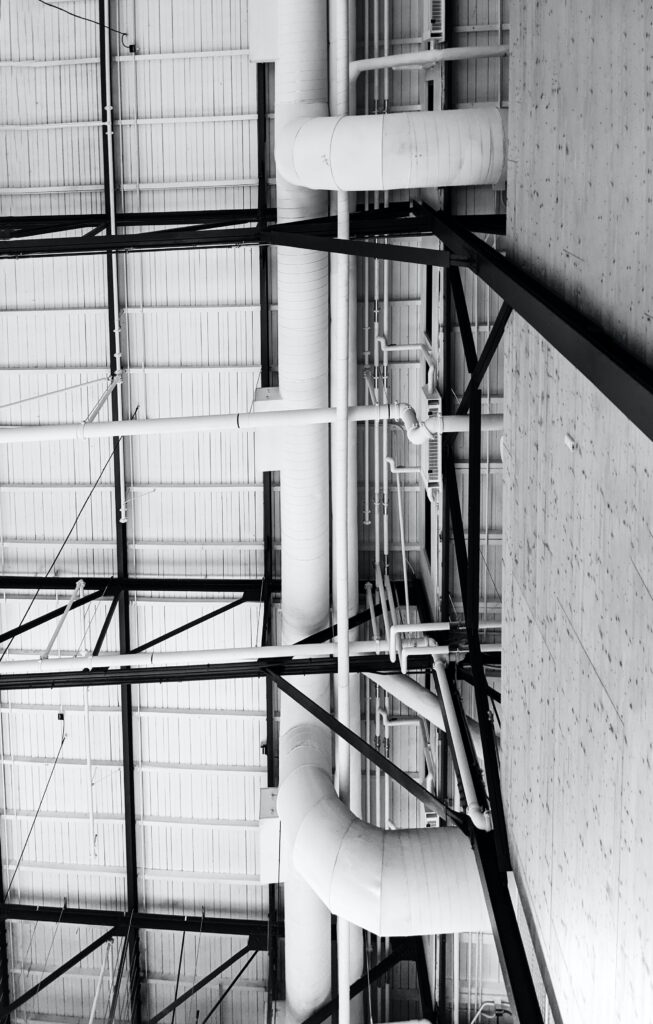Are you a wine enthusiast looking to invest in a wine fridge? If so, you might be wondering whether or not to consider a wine fridge with automatic defrost. This is a common question among wine lovers, as maintaining the perfect temperature and humidity levels is crucial for preserving the quality of your precious wine collection. In this article, we’ll explore the benefits and drawbacks of choosing a wine fridge with automatic defrost, helping you make an informed decision for the long-term storage and enjoyment of your wines.

Understanding Wine Fridges
What is a Wine Fridge?
A wine fridge, also known as a wine cooler or wine refrigerator, is a specialized appliance designed to store and age wine bottles in optimal conditions. Unlike regular refrigerators, wine fridges are specifically engineered to maintain consistent temperature and humidity levels, ensuring that your wine collection remains in perfect condition.
Types of Wine Fridges
There are several types of wine fridges available in the market, each catering to different storage needs and preferences. The most common types include built-in wine fridges, under-counter wine fridges, freestanding wine fridges, and dual-zone wine fridges. Built-in wine fridges are designed to be seamlessly integrated into your kitchen cabinetry, while under-counter wine fridges fit perfectly beneath countertops. Freestanding wine fridges, on the other hand, offer more flexibility in terms of placement. Dual-zone wine fridges are ideal for wine enthusiasts who want to store both red and white wines at different temperatures.
Benefits of Using a Wine Fridge
Investing in a wine fridge provides numerous benefits for wine enthusiasts. Firstly, it allows you to store your wine collection in a controlled environment, protecting it from factors such as temperature fluctuations, UV light, and excessive humidity. This ensures that your wine ages gracefully and maintains its quality and flavor. Additionally, a wine fridge allows you to organize and display your collection, making it easily accessible for future enjoyment. Lastly, a wine fridge offers convenience by eliminating the need to constantly shuffle bottles in and out of regular refrigerators, ensuring that you always have a perfectly chilled bottle on hand.
Features of a Wine Fridge
Size and Storage Capacity
When choosing a wine fridge, it’s important to consider its size and storage capacity. Wine fridges come in various dimensions, ranging from small countertop models to larger freestanding units. Assess your wine collection and determine how many bottles you plan to store, as well as the available space in your home. Ensure that the wine fridge you choose has enough storage capacity to accommodate your collection comfortably.
Temperature Zones
Temperature control is a critical feature of wine fridges. Different types of wines require specific temperature ranges to age properly and preserve their flavors. Most wine fridges offer multiple temperature zones, allowing you to set different temperatures for various types of wine within the same unit. This feature is particularly beneficial if you enjoy both red and white wines, as they require different storage temperatures.
Shelving and Racks
The shelving and racks inside a wine fridge play a crucial role in organizing and protecting your wine bottles. Look for wine fridges with sturdy, adjustable shelves that can accommodate various bottle sizes. Sliding racks or pull-out shelves make it easier to access your bottles, while wooden shelves provide an elegant touch. Additionally, consider whether the shelves are designed to prevent bottles from rolling or jostling, as this helps minimize the risk of damage to your wine collection.
Door Type
The type of door on a wine fridge can impact its functionality and efficiency. Solid doors offer excellent insulation and protection from UV light, but they don’t allow you to see your collection without opening the fridge. Glass doors, on the other hand, provide a clear view of your wines, allowing for easy organization and display. However, they may require additional UV protection to prevent light damage to your wine. Some wine fridges even feature double-paned glass doors with UV filters for optimal protection while still providing visibility.
Vibration Control
Excessive vibration can disturb the sediment in wine bottles, potentially affecting the aging process and compromising the quality of the wine. Look for wine fridges with vibration control mechanisms, such as rubberized or shock-absorbing shelves, to minimize vibrations. This feature is particularly important if you plan to store delicate and aged wines.
Level of Noise
Consider the noise level of the wine fridge, especially if you plan to place it in a living area or open kitchen. Some wine fridges produce noise as they regulate temperature, so it’s essential to find one that operates quietly. Look for units with noise-reducing features, such as insulated cabinets and compressors designed to minimize vibrations and noise.
Locks and Security
If you have valuable or rare bottles in your collection, it’s worth considering a wine fridge with built-in locks or security features. These can safeguard your wines from unauthorized access and provide peace of mind, particularly in households with children or frequent visitors.

Importance of Temperature Control in Wine Fridges
Ideal Temperature for Wine Storage
Temperature control is vital when it comes to storing and aging wine. The ideal storage temperature for most wines falls between 45°F and 65°F (7°C to 18°C). This range allows the wine to develop and mature properly without spoiling. It’s crucial to maintain a stable temperature to avoid temperature fluctuations, as they can negatively impact the quality and longevity of the wine.
Effect of Temperature Fluctuations on Wine
Temperature fluctuations, even within the acceptable range, can be detrimental to the overall quality of your wine. Rapid changes in temperature can cause wine to expand and contract, leading to oxidation and potential spoilage. Fluctuations can also disrupt the aging process and result in off-flavors and aromas. Therefore, it is essential to invest in a wine fridge that can effectively control and maintain a consistent temperature.
How Wine Fridges Control Temperature
Wine fridges are equipped with precise temperature control systems to ensure stability in storing conditions. They use thermoelectric or compressor-based cooling mechanisms to regulate and maintain the desired temperature. Thermoelectric wine fridges work by using a cooling plate to absorb heat from the interior, while compressor-based fridges compress and expand a refrigerant to achieve cooling. Both systems are effective at maintaining a constant temperature, allowing your wine to age gracefully.
What is Automatic Defrost?
Basic Concept of Defrosting
Automatic defrosting is a feature found in some wine fridges that prevents the build-up of frost and ice inside the unit. When refrigeration systems operate, moisture from the air can accumulate and freeze on the evaporator coils. Defrosting is necessary to remove this ice and frost, preventing obstruction and maintaining the efficiency of the fridge.
How Automatic Defrost Works
In wine fridges with automatic defrost, the system uses a timer or temperature sensor to determine when defrosting is required. When triggered, the fridge temporarily stops cooling and activates a heating element or hot gas system. The heat melts the ice and frost, which is then drained away through a tube or pan. Once the defrost cycle is complete, the fridge resumes its cooling operation.
Common Types of Automatic Defrosting Methods
There are several methods of automatic defrosting commonly used in wine fridges. The most common is the timer-based defrost system, which activates at fixed time intervals, regardless of the fridge’s actual cooling needs. Another method is the temperature sensor-based defrost system, where the fridge detects a rise in temperature caused by the build-up of frost and initiates the defrost cycle. Some advanced wine fridges incorporate adaptive defrost technology, which adjusts the defrost cycle timing based on real-time temperature and humidity conditions inside the fridge.

Benefits of Automatic Defrost in Wine Fridges
Ease of Maintenance
One of the significant advantages of automatic defrost in wine fridges is the convenience it offers in terms of maintenance. By preventing ice and frost accumulation, it eliminates the need for manual defrosting, saving you time and effort. With automatic defrost, you can focus on enjoying your wine collection rather than frequently attending to maintenance tasks.
Consistent Temperature Control
Automatic defrost ensures that the cooling system in the wine fridge operates efficiently by preventing the build-up of frost. By removing the ice and frost, the fridge can maintain a consistent and uniform temperature, which is crucial for the optimal storage and aging of wine. Consistent temperature control helps preserve the wine’s flavors, aromas, and overall quality.
Energy Efficiency
Automatic defrosting systems in wine fridges are designed to be energy-efficient. By regularly eliminating frost and ice build-up, the cooling system can operate more efficiently, reducing energy consumption. Efficient energy usage not only benefits the environment but also helps lower energy costs in the long run.
Reduced Risks of Ice Build-up
Excessive frost and ice accumulation in a wine fridge can restrict airflow and hinder the cooling process. This can lead to temperature fluctuations and uneven cooling, potentially damaging your wine collection. Automatic defrosting mitigates these risks by eliminating ice build-up, ensuring that your wines are stored under consistent and optimal conditions.
Drawbacks of Automatic Defrost in Wine Fridges
Possible Disturbance in Temperature
While automatic defrost provides convenience, it can cause slight temperature fluctuations during the defrost cycle. The temporary interruption to the cooling process can result in a minor increase in temperature. Although most wine fridges are designed to minimize these fluctuations, it’s important to consider this factor, especially if you have delicate or aged wines that are highly sensitive to temperature changes.
Energy Usage
Automatic defrosting systems require energy to heat the coils and melt the ice, leading to increased energy consumption compared to non-defrosting wine fridges. While the energy usage is relatively minimal, it’s worth considering if you prioritize energy efficiency in your appliances.
Potential Noise from Defrost Cycle
During the defrost cycle, some wine fridges with automatic defrosting systems may produce additional noise. The heating element or hot gas system used to melt the ice can generate audible sounds. However, advancements in technology have significantly reduced the noise levels associated with defrosting cycles, making it less of a concern for many users.
Higher Initial Expense
Wine fridges with automatic defrosting systems often come at a slightly higher price point compared to non-defrosting models. This is due to the additional components and technology required for the automatic defrost feature. If budget is a significant factor for you, it’s important to weigh the benefits of automatic defrosting against the potential increase in cost.
Alternatives to Automatic Defrost Wine Fridges
Manual Defrost Wine Fridges
If you prefer a wine fridge without automatic defrosting, manual defrost models are available as an alternative. Manual defrost wine fridges require periodic maintenance to remove ice and frost manually. This involves turning off the fridge, allowing the ice to melt naturally, and cleaning up the water afterwards. While manual defrosting requires more effort and time compared to automatic defrosting, it may be a suitable option if you have specific preferences or if you are looking for a more budget-friendly alternative.
Frost-free Wine Fridges
Frost-free wine fridges are another alternative to automatic defrost models. These fridges use a fan to circulate air throughout the unit, preventing the formation of frost and ice. While this eliminates the need for manual defrosting, it’s important to note that frost-free wine fridges may not achieve the same level of temperature stability as automatic defrost models. The constant circulation of air can result in slight temperature variations, which may not be ideal for wines that require precise storage conditions.
Comparing the Different Options
When considering alternatives to automatic defrost wine fridges, it’s essential to evaluate your priorities and requirements. Automatic defrosting provides convenience and consistent temperature control, but it may come at a higher initial expense. Manual defrost wine fridges require more maintenance effort but may offer a more budget-friendly option. Frost-free wine fridges eliminate the need for manual defrosting but may sacrifice some temperature stability. By understanding the pros and cons of each option, you can make an informed decision based on your specific needs.
Final Thoughts on Automatic Defrost Wine Fridges
Reviewing the Benefits and Drawbacks
Automatic defrost wine fridges offer convenience and ease of maintenance, ensuring that your wines are stored in optimal conditions without the need for manual intervention. The consistent temperature control helps preserve the quality and flavors of your wine collection. However, it’s important to consider the potential drawbacks, such as minor temperature fluctuations during the defrost cycle and increased energy usage. Balancing these benefits and drawbacks will help you determine if an automatic defrost wine fridge is the right choice for you.
Understanding Your Priorities
When selecting a wine fridge, it’s essential to understand your priorities and preferences. Consider factors such as the size and storage capacity you need, the types of wines you plan to store, and the available space in your home. Additionally, think about how important temperature control, maintenance convenience, and energy efficiency are to you. By evaluating your priorities, you can make a well-informed decision that aligns with your specific requirements.
Recommendations for Different Types of Users
For wine enthusiasts who prioritize convenience and efficiency, an automatic defrost wine fridge is an excellent choice. It offers hassle-free maintenance and consistent temperature control, ensuring that your wine collection ages gracefully. If you have a larger budget and value the convenience of automatic defrosting, investing in a high-quality wine fridge with this feature is highly recommended.
However, if you have a smaller budget or prefer a more hands-on approach to maintenance, a manual defrost wine fridge may be the right option for you. This allows you to control the defrosting process and customize it according to your schedule. Similarly, if budget is a significant constraint but you still want to eliminate the need for manual defrosting, a frost-free wine fridge can be a suitable alternative.
Ultimately, the choice of wine fridge depends on your individual preferences, collection size, and budget. By considering the features, benefits, and drawbacks outlined in this article, you can make an informed decision and find the perfect wine fridge to enhance your wine storage and enjoyment experience.
